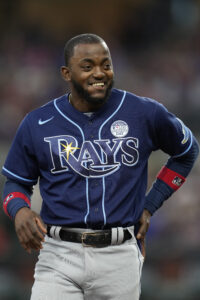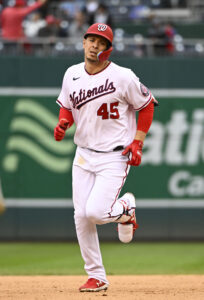The Rangers spent most of last year out of playoff contention, in significant part due to an inability to win close games. Texas finished 26 games under .500 despite a relatively modest -36 run differential, with a staggering 15-35 record in one-run contests dooming any chance they had of sticking around the periphery of the Wild Card race.
Any time a team is that bad in close games, it’s safe to assume they were victimized by a lack of clutch hitting. That was true of Texas, although their struggles also reflected a middling relief corps. Ranger relievers finished 21st in strikeout/walk rate differential and tied for sixth in blown saves (28). Nevertheless, the Rangers shied away from any splashy additions to the bullpen this winter. They instead poured virtually all their resources into completely overhauling the starting rotation.
That’s a strong show of faith in the club’s internal bullpen options. It’s a relatively young group but one that has a few players coming off strong 2022 seasons. Hard-throwing righties José Leclerc and Jonathan Hernández returned from Tommy John rehabs to impress down the stretch. Meanwhile, left-hander Brock Burke quietly put forth an excellent year as a multi-inning weapon.
Burke underwent a significant surgery of his own a few years back. He’d debuted in the big leagues with six unsuccessful starts in 2019 and required a procedure to fix a labrum tear in his throwing shoulder the ensuing offseason. Burke would’ve missed the entire ’20 season regardless of whether a full schedule were played. He returned to health in 2021 but spent the whole year on optional assignment to Triple-A Round Rock.
When he took the mound for his 2022 debut on April 10, it represented his first big league outing in two and a half years. The Rangers unsurprisingly deployed him in mostly low-stakes innings for the season’s first month. After posting a 20:3 strikeout-to-walk ratio through the end of April, Burke increasingly found himself in more meaningful game states. He’d remain a consistent weapon throughout the year, posting an ERA below 4.00 in each month — including a sub-3.00 mark for the first four months of the season.
Called upon 52 times, Burke soaked up an MLB-leading 82 1/3 innings of relief. No reliever faced more than the 328 batters that stepped in against him. Despite frequently going into a second inning, Burke remained very productive on a per-batter basis. He held opponents to a putrid .211/.275/.356 line, striking out an above-average 27.4% of batters faced with a solid 7.3% walk rate. He compiled a 1.97 ERA. Estimators like FIP and SIERA felt his production was more akin to that of a low-3.00’s ERA hurler, but even regression to that level would leave Burke as a quality high-leverage arm.
Now 26, Burke had been a solid prospect prior to his shoulder injury. Acquired from the Rays in the three-team deal that sent Jurickson Profar to Oakland over the 2018-19 offseason, he appeared among Texas’ top 30 farmhands at Baseball America over his first two years in the organization. Evaluators regarded him as a potential back-of-the-rotation starter, though his injury threw that off course. Burke told reporters (including Levi Weaver of the Athletic) over the offseason he was hopeful of getting another crack in the rotation. The Rangers’ activity in that regard rules that out, at least to open the year, and the former third-round draftee added he was content with whatever role he’s assigned.
The Rangers seem poised to count on him even more heavily out of the bullpen. General manager Chris Young left open the possibility of Burke getting some ninth-inning work for the first time in his career, though he suggested the multi-inning fireman role might be more valuable for first-year skipper Bruce Bochy. Young implied the team could look to get Burke as many as 100 innings of relief in 2023, a tally only once reached in MLB over the past decade (by then-Rays southpaw Ryan Yarbrough, who frequently operated as a bulk pitcher behind an opener, in 2018).
Whatever the role, it’s clear Burke has put himself among Texas’ most important relievers. The club watched Matt Moore sign with the division-rival Angels and lost Brett Martin for at least the bulk of the upcoming season to shoulder surgery. Taylor Hearn, John King and non-roster invitee Danny Duffy are still in the mix, but the Rangers’ left-handed bullpen contingent isn’t as strong as it was six months ago. Burke certainly won’t function in a lefty specialist capacity but is certain to get plenty of looks against opposing teams’ best hitters from either side of the dish. While that wasn’t the case at this time a year ago, he’s now entrenched in the bullpen after his breakout season.
Image courtesy of USA Today Sports.



